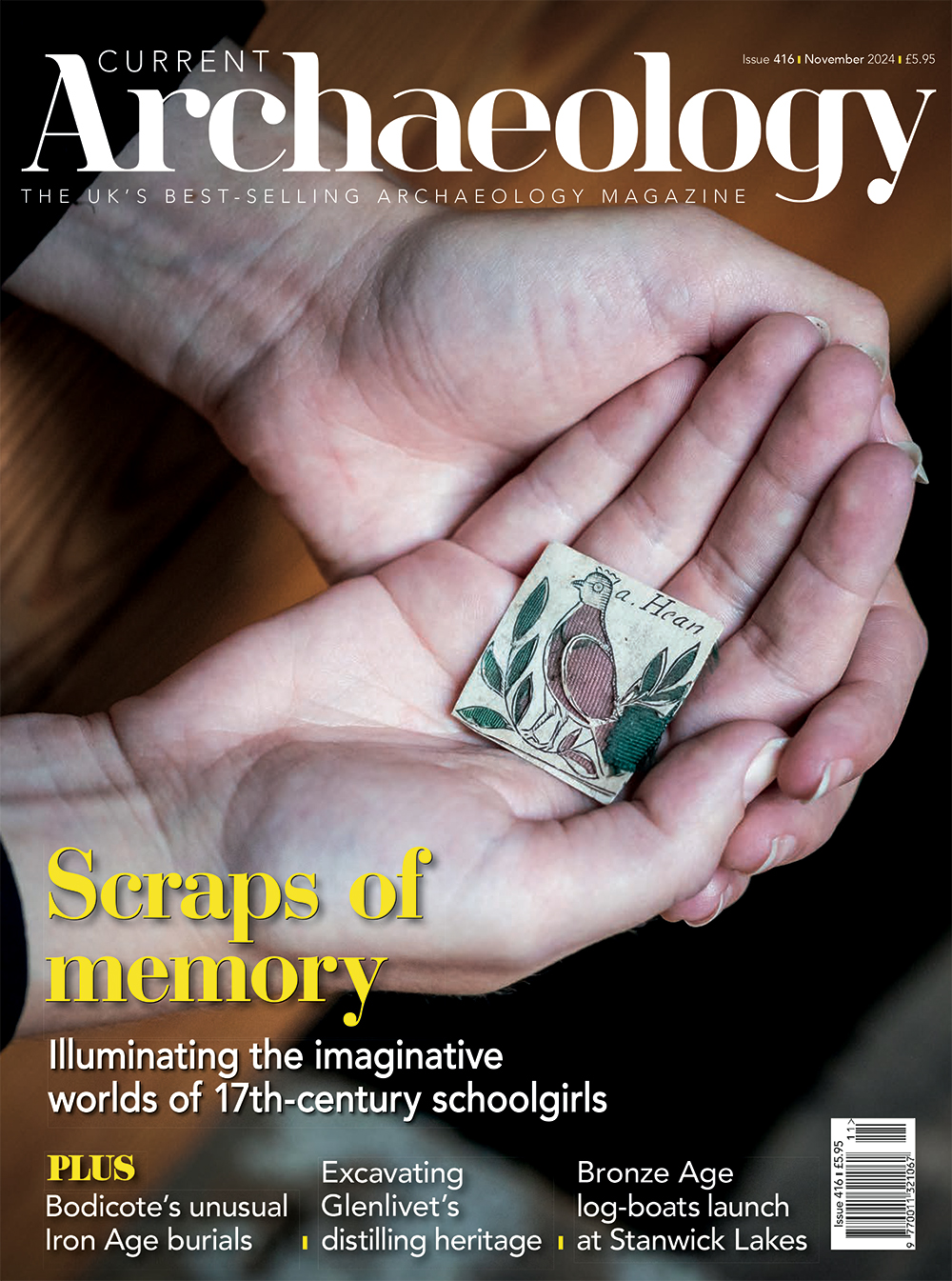Children often leave only faint traces in the archaeological record, so it is always exciting to be able to piece together their experiences in the past. Our cover feature visits Sutton House in Hackney, once a 17th-century girls’ school, where delicate scraps of paper have offered unique insights into the imaginations of one group of young women.
Turning from educational ephemera to the complexities of prehistoric funerary practices, we next travel to Bodicote in Oxfordshire, home to an Iron Age farmstead, including ten pit burials with unexpected attributes.
From treatment of the dead to the ‘water of life’, we then turn the spotlight on Speyside, one of five recognised whisky-producing regions in Scotland, where archaeologists have been uncovering one of the area’s earliest legal distilleries.
The buildings in our next feature have a rather more sacred flavour: Norfolk’s almost 650 surviving medieval churches, which often incorporate Roman remains into their masonry. What can be learned about their development? Much smaller constructions come next: a trio of Bronze Age-style log-boats built during an experimental archaeology project at Stanwick Lakes in Northamptonshire. CA went to watch the craft take to the water for the first time, and to learn about the country park’s archaeological legacy and ongoing heritage programme.
Speaking of experimental archaeology, you might call Edmund Artis an early pioneer, as he built a replica Roman kiln to test his theories in the 19th century. Our final feature recounts his eventful life and lasting influence – and, given CA’s enthusiasm for ‘edible archaeology’, I am delighted that it all began with a cake shaped like a castle.

